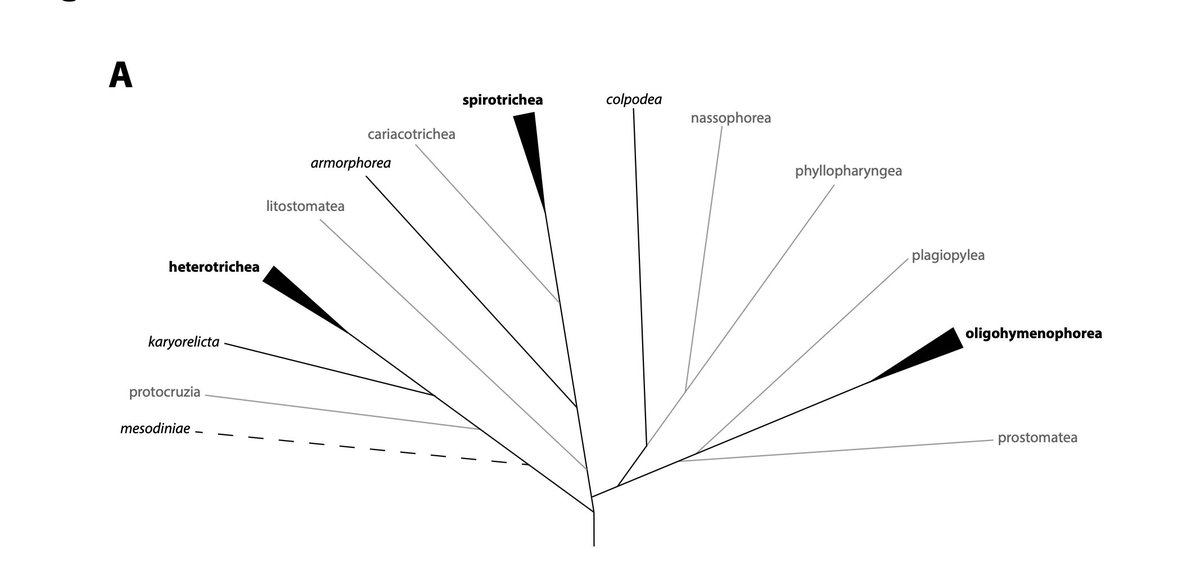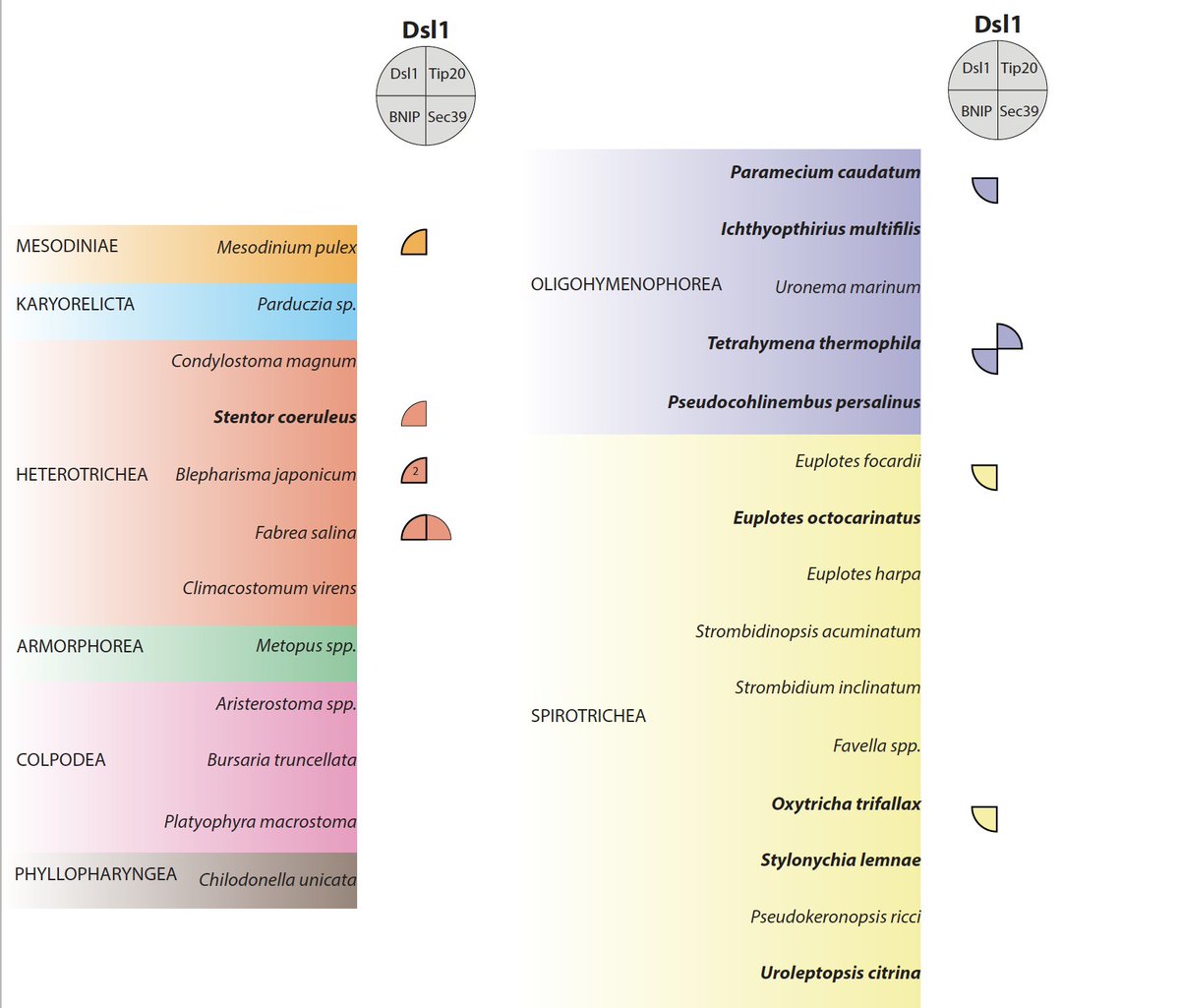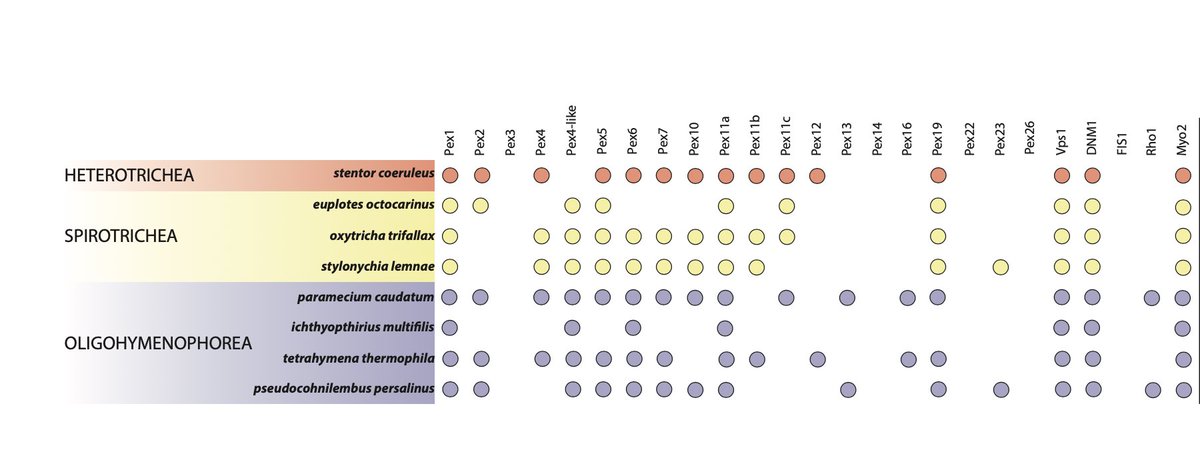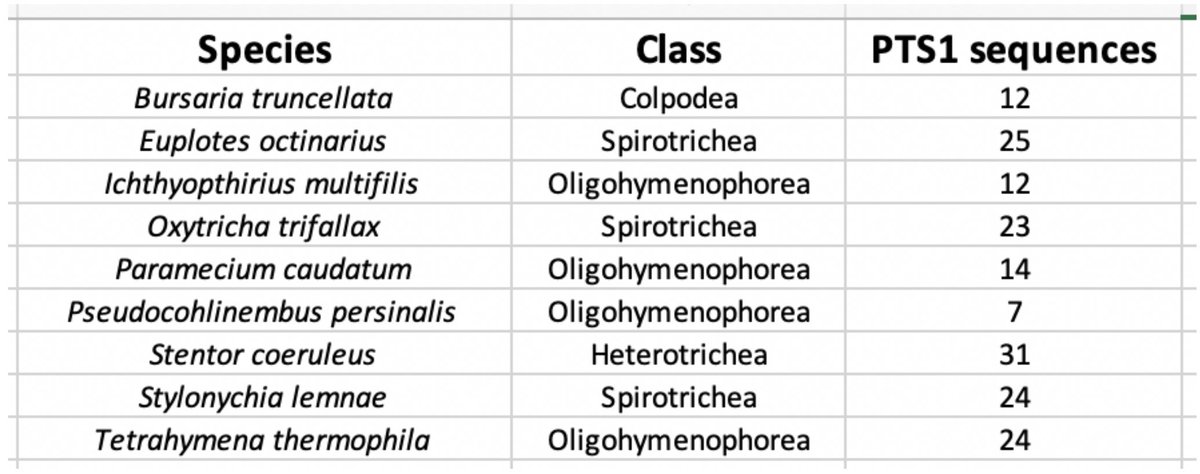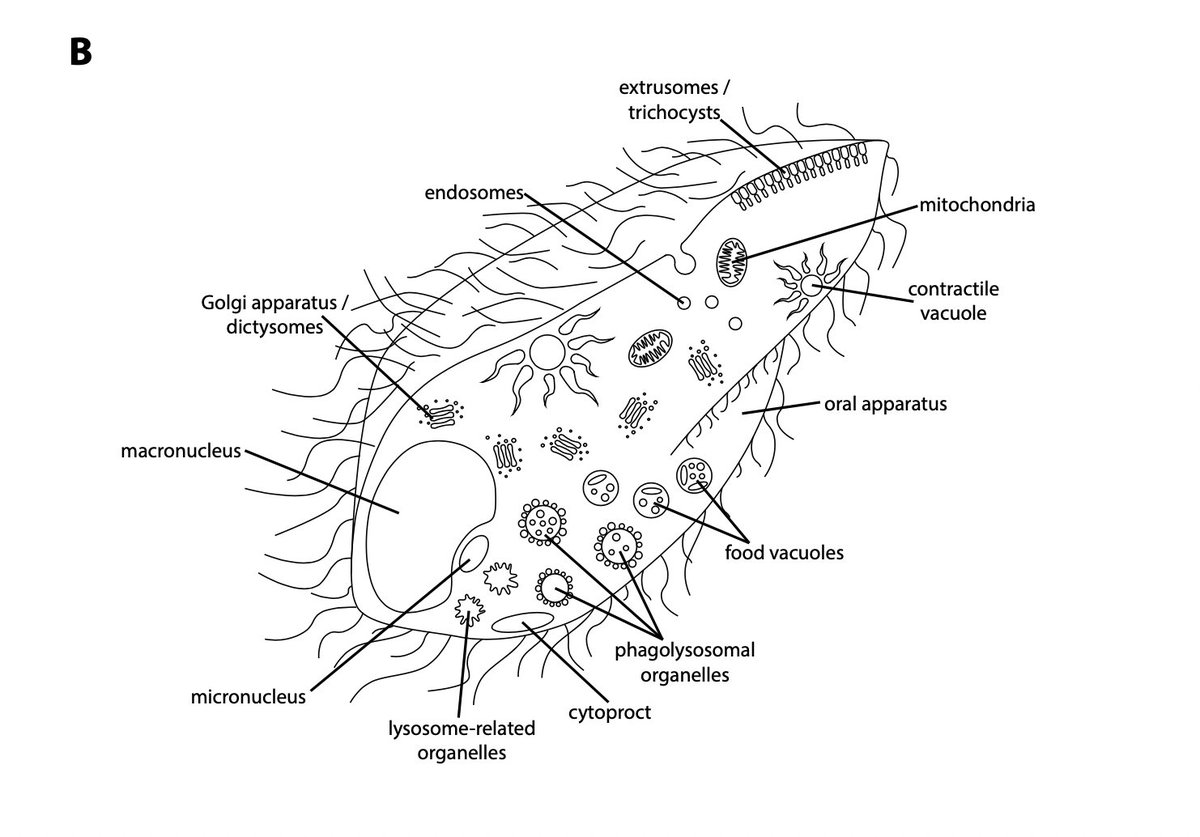Welcome to my #ProtistSession! In this thread I’m going to be telling you The Curious Case Of The Ciliates And Their Paradoxically Proliferating Peroxisomes. Deerstalker caps on, everyone!
Ciliates are a very popular phylum on Twitter, due to their charismatic and bloodthirsty predation on smaller organisms. Check out the many videos on the #ciliates Twitter hashtag for lots of videos from microscopists much more talented than me.
The ciliate phylum sits within the Alveolata, in the SAR supergroup. Alveolates are known for their specialised membrane trafficking systems, and in the ciliates, this includes extensive pathways associated with exocytosis. The ciliate phylum is extremely diverse - see below.
Extrusomes, which are organelles that sit just below the cell membrane of many ciliate species and are implicated in processes from predator evasion to prey capture, are just one of the innovations that are associated with ciliate exocytosis machinery.
My PhD supervisor @DacksLabECB and I were running a comparative genomic analysis of membrane trafficking components across ciliate diversity (manuscript in preparation), because we were interested in tracking these innovations. We noticed a strange trend.
Dsl1 is a complex originally identified in yeast that is associated with peroxisomal biogenesis from the rough endoplasmic reticulum. It is generally thought to be essential for peroxisomal biogenesis and function.
Ciliate history buffs will already know the surprise here. Model ciliates are have fully functional peroxisomes - in fact, Tetrahymena thermophila was one of the organisms in which peroxisomes were originally described and identified.
We double-checked for presence of peroxisomes in the ciliate genomes from our dataset and found that all of the proteins essential for peroxisomal function were present.
We also checked for the presence of PTS-targeted proteins and found that they were present and many could be identified via BLAST as peroxisomal proteins. All signs pointed to functional peroxisomes across ciliate diversity.
The central mystery: if peroxisomes are functional across ciliate diversity but the Dsl1 complex has been lost, how is peroxisomal biogenesis and trafficking mediated in ciliates??????
Hypothesis: Tetrahymena has repurposed other membrane trafficking components to new pathways; for example, CORVET in late endosomal trafficking and AP3 in exocytosis (Sparvoli et al. 2018, Curr. Biol https://pubmed.ncbi.nlm.nih.gov/29478853/ )">https://pubmed.ncbi.nlm.nih.gov/29478853/...
Given their tendency to duplicate genomes and the astounding genetic complexity in ciliates, other membrane trafficking components may be fulfilling this function alongside their canonical roles.
Unfortunately, before we could look into this further, I had to graduate and find a job and now spend most of my time evaluating sequencing runs and scrubbing mine tailings from under my fingernails.
If anyone is interested this phenomenon and wants more info, feel free to drop me an email or a DM! You can also get in touch with Dr. Joel Dacks at @DacksLabECB or via his email.
I& #39;m going to leave you with two of my attempts at drawing a ciliate, and leave you to guess which one made it into my thesis. (Alternative caption: 2019 vs 2020)
THE TRUTH IS OUT THERE. I WANT TO BELIEVE. #ProtistSession out.

 Read on Twitter
Read on Twitter